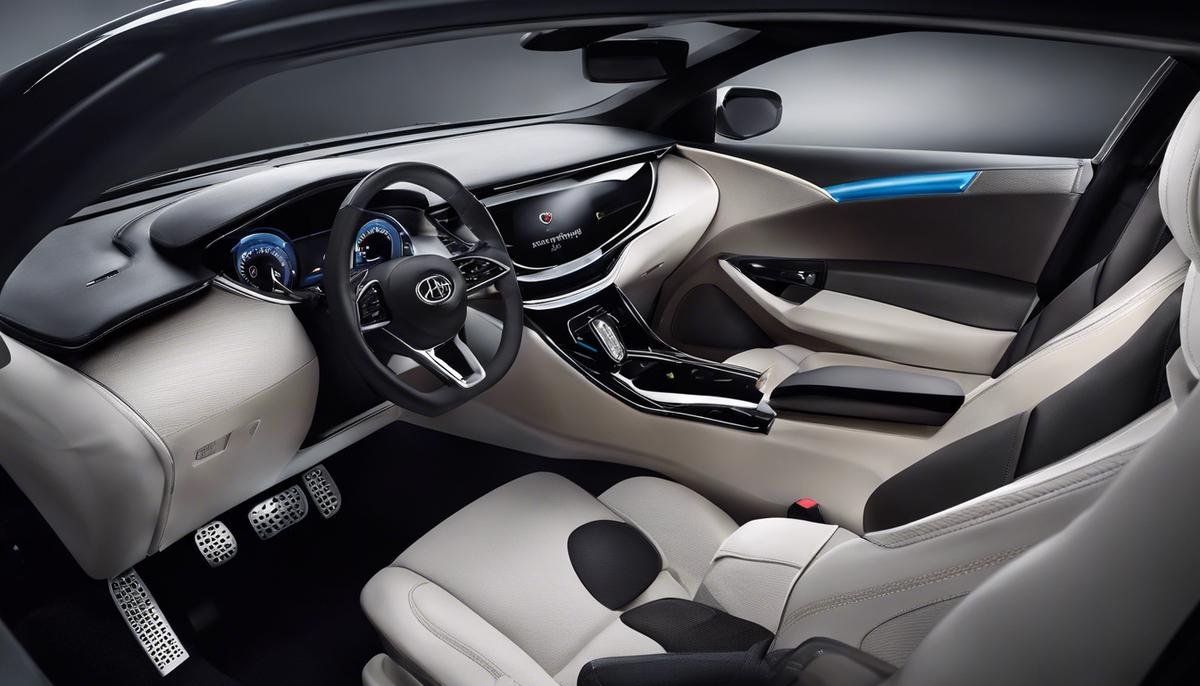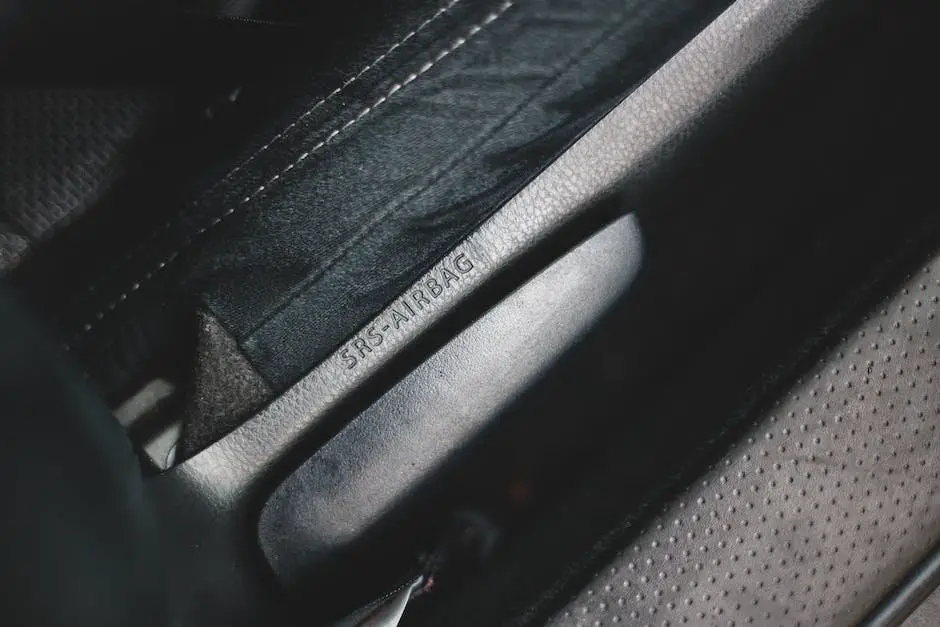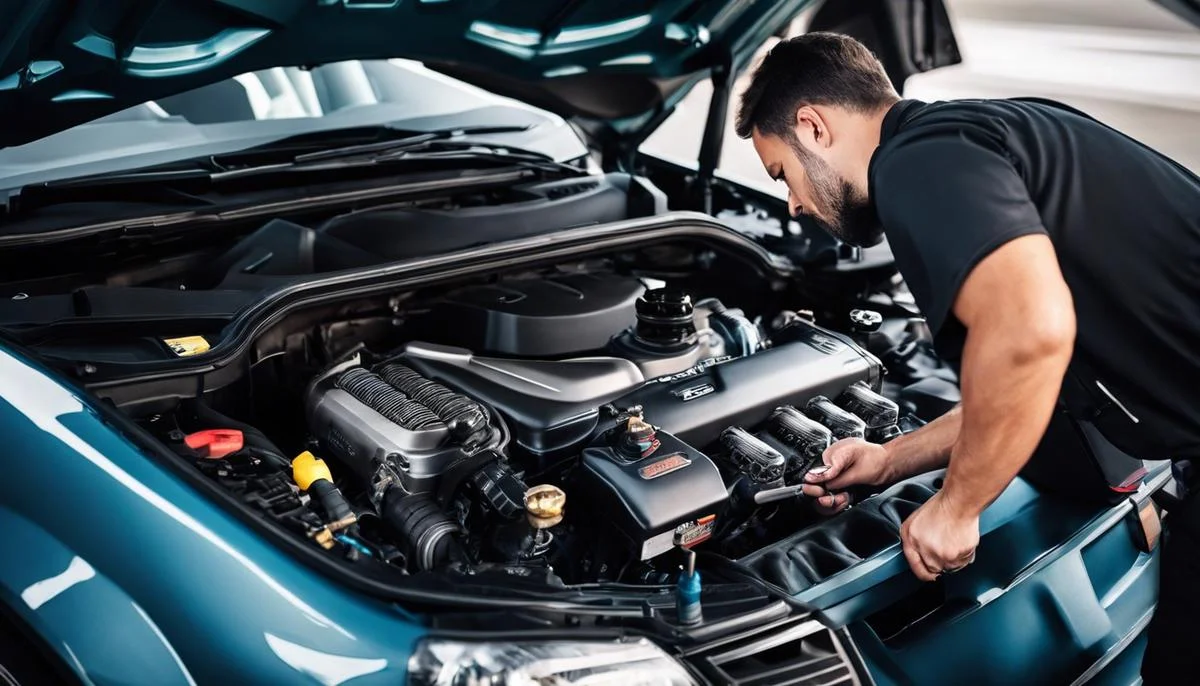
When buckling up for a drive, the reinforced sense of security felt is not solely courtesy of the seatbelt snugly fastened across your chest. An unspoken guardian, camouflaged within the fabric of today’s automobiles, stands vigilant to offer supplemental protection during unexpected moments of crisis. This guardian is known as the Supplemental Restraint System (SRS), an essential ensemble of safety devices engineered to work in conjunction with seat belts and safeguard occupants against the harms of vehicular collisions. From its inception to the intricate web of technology it now encompasses, understanding the SRS’s pivotal role in automotive safety is not just beneficial—it could be life-saving. As we explore the evolution, components, and impact of SRS, we delve into the sophisticated realm where modern engineering meets proactive accident preparedness.
What Is SRS in Automotive Context?
Understanding SRS in the World of Automotive Safety: Not Just Airbags
In the automotive industry, safety is paramount, and technology continually pushes the boundary of what's possible in keeping drivers and passengers secure. Enter "SRS" – a term any tech-savvy individual must be familiar with.
SRS is an acronym for "Supplemental Restraint System," a term that encompasses far more than the common airbag system many tend to associate it with. This system is designed to work in tandem with seat belts, providing an additional level of protection in the event of a collision. It's an integral part of the modern vehicle's safety network, a testament to the engineering dedication to preserving lives on the road.
The sophisticated technology behind SRS includes various sensors that continuously monitor a vehicle's motion and detect abrupt changes that indicate a collision or an imminent one. These sensors are hyper-alert watchdogs, ready to activate the SRS in a split second. When a collision is detected, the SRS orchestrates a coordinated deployment of safety features, including but not limited to airbags. Airbags then inflate rapidly to provide a cushioning barrier between the occupants and the interior of the vehicle, significantly mitigating potential injuries.
Yet, SRS is more than airbags alone. It's an umbrella term that also covers seatbelt pre-tensioners – devices that automatically tighten seatbelts to secure passengers firmly in their seats during a crash. This prevents the occupants from being thrown forward, a common cause of injury in accidents.
Moreover, the evolution of SRS technology leads to the integration of advanced restraint systems such as knee airbags, side-curtain airbags, and even sophisticated seat designs that can absorb impact energy efficiently, all orchestrated for peak performance during those critical moments.
As an early adopter or enthusiast, knowing the intricacies of SRS is essential. It's a reminder of the complex safety dance that occurs behind the scenes every time one gets behind the wheel. The next time the conversation steers towards the latest and greatest tech advancements, remember that SRS is a system that truly encapsulates the intersection of technology with human-centric design.

Key Components of a Vehicle's SRS
Harnessing the Unseen: The Computing Power Behind SRS
In the realm of automotive safety technology, the advanced computing systems integrated within a vehicle's Supplemental Restraint System (SRS) are the unsung heroes. The seamless orchestration of sensors and safety mechanisms is facilitated by a robust and sophisticated electronic control unit (ECU) — the nerve center of the SRS.
Think of the ECU as the brain that interprets sensor inputs, classifying the severity of a collision in milliseconds. This split-second computation is critical, as it determines the precise response needed for optimal occupant protection. The faster and more accurate the computational power, the better the system can safeguard against injury.
Beyond the ECU, today's SRS is propelled into excellence by high-speed algorithms that continuously analyze vehicle dynamics. Innovations like rollover sensors expand the protective envelope, triggering appropriate safety responses not just in direct impacts, but also in complex, multi-dimensional accidents. The utility of these systems lies in their predictive capabilities, which anticipate and mitigate the effects of a collision before they fully unfold.
As technology enthusiasts, we can't overlook the integration of telematics in enhancing SRS performance. Real-time data transmission ensures that the vehicle's SRS adjusts to changes in driving patterns, traffic conditions, and even adjusts based on continuous learning from wide pools of aggregated vehicular data. This is the Internet of Things (IoT) in action – smart, interconnected devices exchanging data to optimize human safety.
Moreover, advancements in materials science have led to the development of more efficient airbag propellants and textiles, reducing deployment time while increasing effectiveness. The fusion of material innovation and computing is indicative of a multidisciplinary approach to SRS technology, pushing the frontiers of what's possible in automotive safety.
In conclusion, the elevated computing power, cutting-edge algorithms, and integration with IoT platforms underpin a legacy of safety within the SRS framework. While these technologies operate silently behind the scenes, their impact is loud and clear during critical moments on the road, providing a safety net that adapts, predicts, and protects with unparalleled precision. For the tech-savvy, recognizing the complex web of technologies that safeguard our journeys is not just a matter of curiosity, but of deep appreciation for the harmony between human-centric design and technological innovation.

The Impact of SRS on Vehicle Safety Ratings
As technology relentlessly propels forward, vehicle safety systems have transcended mere passive mechanisms and are now sophisticated symphonies of hardware and software integration. Integral to this progression is the electronic control unit (ECU)—the nerve center commanding the Supplemental Restraint System (SRS).
Considering the speed at which accidents occur, ECUs are designed for rapid ingestion and processing of data. With more advanced computing power, the ECU can make split-second decisions crucial in deploying the right restraint mechanisms to protect passengers.
But it's not just raw processing power that's pivotal. High-speed algorithms are the linchpin for analyzing complex vehicle dynamics. These proprietary codes are constantly being refined to expand the protective envelope around passengers, crafting a safety cocoon that is not just reactive, but predictive.
Modern vehicles are now melded with telematics, enabling them to harness the power of connectivity. Real-time data transmission and analytics serve a dual purpose—providing immediate assistance and aggregating data for continuous learning and system upgrades.
In the realm of materials science, relentless innovation is leading to more efficient and less aggressive airbag propellants, as well as textiles that offer robust yet benign protection upon deployment. Airbags are becoming not only smarter but tailored to deploy with precision suited to the specifics of any given collision scenario.
It's this multidisciplinary approach—bringing together material innovation, sophisticated computing, and robust connectivity—that defines the leading edge of vehicle safety technology. SRS is no longer a static system; it is now a dynamic, learning network that advances with every journey.
To quantify the impact on vehicle safety ratings, SRS technologies are forcing a re-evaluation of what it means to be 'safe'. Elevated computing power, leading-edge algorithms, and Internet of Things (IoT) integration are the trio driving this revolution. As these elements synergistically enhance the functionality and responsiveness of SRS, vehicles are becoming not just safer in spec but in reality—a distinction that is reflected in improved safety ratings and, most critically, outcomes in real-world accidents.
In essence, SRS technologies are transcending their traditional roles, evolving into a digital sentinel guarding passengers against the unpredictability of the roads. Vehicle safety ratings are now as much a testament to technological prowess as they are to mechanical integrity—signaling a new epoch where technology is the standard-bearer for vehicular safety.

Photo by ilyapavlov on Unsplash
Future Developments in SRS Technology
Advancing Beyond SRS: The Dawn of Autonomous Safety Systems
As the foundation of vehicle safety, Supplemental Restraint Systems (SRS) have shown significant proficiency in protecting occupants during collisions. The technology is now leaping forward, transcending conventional mechanisms and embracing the automation era. The future is defined by the emergence of autonomous safety features, where SRS systems operate synergistically with advanced driver-assistance systems (ADAS) to proactively prevent accidents.
Artificial Intelligence (AI) and Machine Learning (ML) Influence
AI and ML are revolutionizing the SRS landscape. Smart systems, trained on vast datasets, can now predict collision scenarios and adjust restraint mechanisms preemptively for optimized occupant protection. This new breed of SRS technologies not only reacts to collisions but actively works to mitigate their severity even before they occur.
Vehicle-to-Everything (V2X) Communication
Inter-vehicle communication has opened a realm of possibilities for real-time hazard avoidance. SRS systems of the future will use vehicle-to-everything (V2X) communication to their advantage. By receiving data from surrounding infrastructure, and other vehicles, SRS can better prepare for imminent threats, adjusting protection measures accordingly.
Biometric Monitoring Integration
Emerging trends also include the integration of biometric monitoring into the SRS. Vehicles equipped with such capabilities will monitor vital signs of occupants, tailoring airbag deployment and restraint tension to individual physiological characteristics in the event of a collision. This personalized safety approach is the epitome of human-centric design in automotive technology.
Advanced Pre-Collision Systems
Pre-collision systems equipped with LiDAR, radar, and cameras are becoming more refined, enabling a comprehensive understanding of the vehicle’s external environment. Beyond passive safety, future SRS technology will interface with these systems to activate preventive measures, such as adjusting vehicle dynamics or passenger positions before an accident.
Future Material Advancements
In the near horizon, look for advancements in safer, more adaptable inflatables using novel materials that can change shape or rigidity upon impact. The exploration of non-toxic, environmentally friendly airbag propellants is also under intense research, aiming to further reduce harm in accident scenarios.
Ethical and Regulatory Horizons
Emerging SRS technologies bring forth ethical and regulatory discussions. Balancing safety innovation with privacy concerns, especially in the context of biometric monitoring, shapes the development trajectory. Furthermore, standardization and compliance with international safety regulations ensure that these advanced systems deliver consistent benefits globally.
In conclusion, stay strapped to your seats, as the future of SRS technology isn't just about surviving impacts. It's morphing into a guardian angel that combines robust predictive capabilities, autonomous interventions, and an acute sense of individual occupant needs, all designed to outsmart collisions and elevate passenger safety to unprecedented levels.

Troubleshooting and Maintaining Your Car's SRS
Troubleshooting and Maintaining an Effective SRS
In the sphere of automotive innovation, a robust and reliable Supplemental Restraint System (SRS) is paramount. Maintenance and troubleshooting of this system demand a precise blend of technical know-how and hands-on proficiency.
For an SRS to operate effectively, routine checks on crash sensors are non-negotiable. These sensors are the vanguard of collision detection, thus a single malfunction could skew the precision of the response in critical moments. To troubleshoot sensors, a specialized diagnostic scan tool is indispensable to identify error codes, often pointing to sensor issues like misalignment or electrical faults.
The heart of the SRS—the Electronic Control Unit (ECU)—requires regular firmware updates to ensure optimal functioning. Manufacturers release these updates to address bugs, improve algorithms, and enhance performance. A proactive approach to ECU updates equips the system with the latest refinements in crash detection and airbag deployment strategies.
Connectivity and communication are the unsung heroes in troubleshooting the SRS. With vehicles becoming more connected than ever, utilizing telematics to diagnose and preemptively troubleshoot issues is a game-changer. Receiving real-time feedback on SRS components not only assists in diagnosing errors but also contributes to historical data, refining future SRS performance.
Airbags, the soldiers of the SRS, demand a watchful eye. Besides visual inspections for wear and tear, ensuring the airbag propellants are not compromised involves checking for recalls and manufacturer advisories. Advancements in materials have extended the life of these systems, reducing the frequency, but not the importance, of this maintenance.
Upon the event of collision and airbag deployment, a thorough inspection of all components, including seatbelt pre-tensioners and actuators, is obligatory. These components often require replacement, as they are specifically designed to function once, providing maximum protection.
With the integration of Artificial Intelligence (AI) and Biometric Monitoring, SRS troubleshooting shifts towards software and data analysis. Anomalies in data patterns from these systems indicate potential issues requiring closer examination.
As vehicular technology accelerates towards Vehicle-to-Everything (V2X) communication, the capacity for self-diagnosis and communication with other systems will redefine SRS maintenance. Systems that can communicate their integrity and predict failures preemptively create a resilient protective network that is ever-vigilant.
Moreover, it's pivotal to stay abreast of ethical and regulatory developments, as these guide the permissible scope of SRS technology. From data privacy to system response decisions, regulatory compliance is as much a part of SRS maintenance as the technological constituents.
Ultimately, maintaining an effective SRS is a continuous commitment to safety, requiring a synergistic approach between mechanical vigilance, software diligence, and a keen eye on the horizon of automotive technology. Effective troubleshooting equips these digital sentinels with the accuracy and reliability necessary, ensuring they stand as unwavering guardians on the road.

Armed with a deeper understanding of the Supplemental Restraint System and its instrumental function in safeguarding lives, we stand better equipped to appreciate the intricate safety tapestry woven into the vehicles we occupy daily. The SRS has not only proven to be a critical asset in crash survival but also continues to evolve alongside ever-advancing automotive technology, with the promise of even greater enhancements to occupant safety on the horizon. As keepsakes of this knowledge, we are empowered to become advocates for robust SRS maintenance and remain vigilant for the innovations that will drive us toward an era of unprecedented vehicle safety. Ensuring that these complex systems are in peak working condition is not just a technical duty; it is a covenant with our well-being and that of our fellow passengers on the journey of life.
Image Source: https://writio.com/



